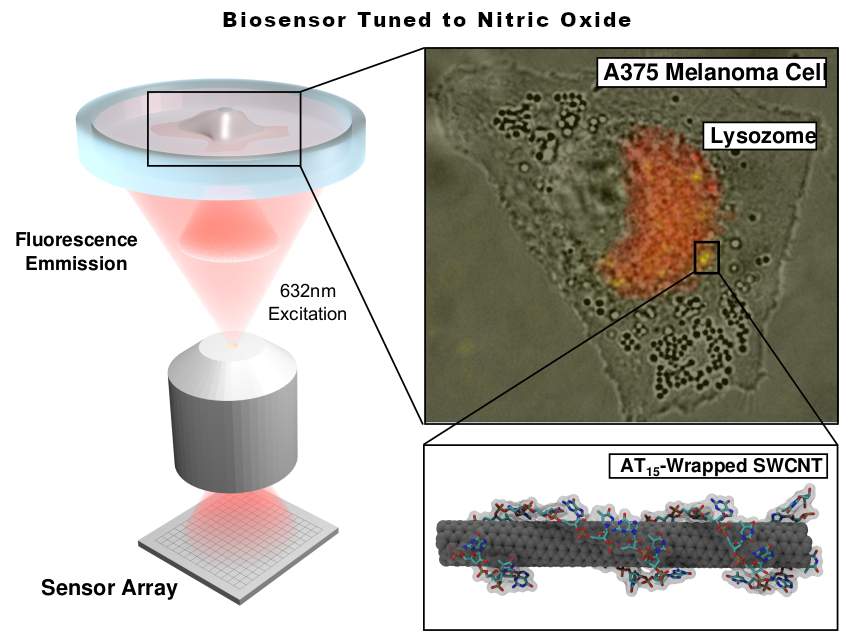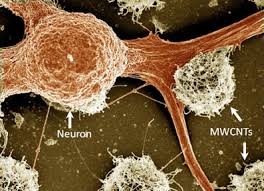It looks like you're using an Ad Blocker.
Please white-list or disable AboveTopSecret.com in your ad-blocking tool.
Thank you.
Some features of ATS will be disabled while you continue to use an ad-blocker.
8
share:
I read the Is Graphene
Shedding article at LewRockwell. A couple things about the article need clarifying in my opinion.
First, shedding.
The article subletly conveys the myth that the vaccines shed. The Pfizer documents define exposure as contact with the vaccine contents, not simply contact with someone vaccinated, but this is left out of shedding fear-mongering. Meaning, if a person is vaccinated, then passes residual "vaccine contents" to another person, then they too could be vaccinated. It isn't someone dropping infectious material like hair. In fact, ECO Health attempted to inoculate bats using sprays and it failed.
Second, the use of glutathione. The article gives the illusion that glutathione combats graphene, then quickly comes to an end like half-effort propaganda.
Glutathione (GSH) does not combat graphene oxide, it reduces it and then gets depleted by it. Reducing GO means removing oxygen molecules, and it simply gives the GO different elctrical properties:
GO and rGO
In the process, GSH itself becomes oxidized and is therefore depleted, which alters the bodies ability to fight reactive oxygen species and leads to cytotoxicity:
GO and GSH
Taking GSH merely cleans up biomarkers and reduces the graphene oxide for them to obtain new electrochemical properties, like biosensors. Much of the research on carbon nanotubes (graphene) says that it is biocompatible, but it isn't. According to The International Chemical Secretariat, graphene itself is noted in several studies to cause cancer (Link).
There are, however, legitimate ways of combating GO. GO will naturally degrade in the body from oxidation. Unlike typical oxidative stress, which results in reactive-oxygen-species (ROSs), graphene breakdown results in advanced lipoxidation end products (ALEs) and reactive carbon species (RCSs). Some ALEs are actual atmospheric pollutants. Not overly surprising its cytotoxic, your body isn't supposed to have graphene in it. GSH, in my opinion, is not capable of handling graphene breakdown properly.
The only substance that I have come across in the literature for degrading graphene in the body, in vivo, is myeloperoxidase. The study I mention above even states:
Notice, they weren't overloading with GSH.
Rather, inducing neutrophil degranulation to get myeloperoxidase.
Herein lies the problem, though.
As myeloperoxidase breaks down the GO, superoxides will be produced, which can become toxic on their own. There is only one antioxidant in the body that handles superoxides, and that's superoxide dismutase (SOD), so GSH is not likely to help in combating GO. It will, however, possibly help clear out biomarker traces of its cytotoxicity.
SOD breaks superoxides down into hydrogen peroxide and water. The peroxide can be good in low amounts, or bad in high amounts; We can take catalase to assist with that.
The associated patents within the Moderna patent covering the carbon nanotubes include:
WO2012094304: Nanotubes as Carriers of Nucelic Acids Into Cells
US 8,246,995: Hydrophobic Nanotubes and Nanoparticles as Transporters for the Delivery of Drugs Into Cells
US013025118: Method for Making Semiconducting Single Wall Carbon Nanotubes
Images of carbon nanotubes used biologically:



The last one is on a neuron.
First, shedding.
The article subletly conveys the myth that the vaccines shed. The Pfizer documents define exposure as contact with the vaccine contents, not simply contact with someone vaccinated, but this is left out of shedding fear-mongering. Meaning, if a person is vaccinated, then passes residual "vaccine contents" to another person, then they too could be vaccinated. It isn't someone dropping infectious material like hair. In fact, ECO Health attempted to inoculate bats using sprays and it failed.
Second, the use of glutathione. The article gives the illusion that glutathione combats graphene, then quickly comes to an end like half-effort propaganda.
According to Vollmer, graphene can produce thrombogenicity (blood clotting) in the human body when it is at greater levels than glutathione – the body’s master scavenger and antioxidant that slows damage to human cells.
Glutathione (GSH) does not combat graphene oxide, it reduces it and then gets depleted by it. Reducing GO means removing oxygen molecules, and it simply gives the GO different elctrical properties:
When the electrically insulating GO is reduced, the reduced graphene oxide formed resembles graphene but contains residual oxygen and other heteroatoms as well as structural defects. A fabrication procedure for rGO that more closely resembles pristine graphene is an outstanding challenge in the field...
Field effect transistors (FETs) that employ rGO have been used as chemical sensors and biosensors.
GO and rGO
In the process, GSH itself becomes oxidized and is therefore depleted, which alters the bodies ability to fight reactive oxygen species and leads to cytotoxicity:
It has been demonstrated that GO causes an increase of intracellular oxidative stress, likely leading to its cytotoxicity and inhibition of cell proliferation. Being one of the main reductive intracellular substances, glutathione (GSH) is vital in the regulation of the oxidative stress level to maintain normal cellular functions. In this study, we found that GSH could be oxidized to GSSG by GO, leading to the formation of reduced GO (rGO). GSH depletion affects the intracellular reductive/oxidative balance, provoking the increase of the reactive oxygen species level, sequentially inhibiting cell viability and proliferation.
GO and GSH
Taking GSH merely cleans up biomarkers and reduces the graphene oxide for them to obtain new electrochemical properties, like biosensors. Much of the research on carbon nanotubes (graphene) says that it is biocompatible, but it isn't. According to The International Chemical Secretariat, graphene itself is noted in several studies to cause cancer (Link).
There are, however, legitimate ways of combating GO. GO will naturally degrade in the body from oxidation. Unlike typical oxidative stress, which results in reactive-oxygen-species (ROSs), graphene breakdown results in advanced lipoxidation end products (ALEs) and reactive carbon species (RCSs). Some ALEs are actual atmospheric pollutants. Not overly surprising its cytotoxic, your body isn't supposed to have graphene in it. GSH, in my opinion, is not capable of handling graphene breakdown properly.
The only substance that I have come across in the literature for degrading graphene in the body, in vivo, is myeloperoxidase. The study I mention above even states:
For example, GO functionalized with a chemotactic peptide was able to deliver doxorubicin efficiently for cancer therapy, and could be biodegraded by myeloperoxidase through the induced neutrophil degranulation.
Notice, they weren't overloading with GSH.
Rather, inducing neutrophil degranulation to get myeloperoxidase.
Herein lies the problem, though.
As myeloperoxidase breaks down the GO, superoxides will be produced, which can become toxic on their own. There is only one antioxidant in the body that handles superoxides, and that's superoxide dismutase (SOD), so GSH is not likely to help in combating GO. It will, however, possibly help clear out biomarker traces of its cytotoxicity.
SOD breaks superoxides down into hydrogen peroxide and water. The peroxide can be good in low amounts, or bad in high amounts; We can take catalase to assist with that.
The associated patents within the Moderna patent covering the carbon nanotubes include:
WO2012094304: Nanotubes as Carriers of Nucelic Acids Into Cells
US 8,246,995: Hydrophobic Nanotubes and Nanoparticles as Transporters for the Delivery of Drugs Into Cells
US013025118: Method for Making Semiconducting Single Wall Carbon Nanotubes
Images of carbon nanotubes used biologically:



The last one is on a neuron.
edit on 20-4-2022 by Wisenox because: Fix quote
edit on 20-4-2022 by Wisenox because: (no reason given)
edit
on 20-4-2022 by Wisenox because: (no reason given)
I never even considered that Glutathione would be a treatment for graphene poisoning. Glutathione can help some problems but is poorly absorbed or
metabolized. So we have to make it in our bodies out of elements needed to make it. Taurine or N-acetyl cysteine are components of it's creation and
there are other sulfer chemistries that can help to create it too. All of them require sulfite oxidase as an enzyme to convert it if I remember right
or the MOCO enzymes.
I try to increase glutathione naturally with food chemistry, it seems to me it is more of a calming chemistry like taurine and NAC supplements are. eating eggs overeasy can help to increase our ability to increase glutathione. Glutathione is not heat stable just like taurine and NAC. I know taurine starts to fall apart or get bound at a hundred sixty degrees F and NAC is heat stable till about two hundred five degrees F. I don't know the temp of stability of Glutathione though, only that it is not very heat stable. I figured these compounds are heat stable up to the temperature that destroys the enzyme that keeps eggs from hardening. Once the egg hardens and destroys that enzyme, many of the amino acids are bound to other stuff in the proteins.
I try to increase glutathione naturally with food chemistry, it seems to me it is more of a calming chemistry like taurine and NAC supplements are. eating eggs overeasy can help to increase our ability to increase glutathione. Glutathione is not heat stable just like taurine and NAC. I know taurine starts to fall apart or get bound at a hundred sixty degrees F and NAC is heat stable till about two hundred five degrees F. I don't know the temp of stability of Glutathione though, only that it is not very heat stable. I figured these compounds are heat stable up to the temperature that destroys the enzyme that keeps eggs from hardening. Once the egg hardens and destroys that enzyme, many of the amino acids are bound to other stuff in the proteins.
Spam
edit on 4/21/2022 by semperfortis because: (no reason given)
new topics
-
Teenage Girl Raped and Woman Sexually Assaulted on Brighton Beach
Social Issues and Civil Unrest: 1 hours ago -
When locals can spot your counterfeit pandas
Jokes, Puns, & Pranks: 1 hours ago -
Sept 2024 - MATT GAETZ Reveals There Are FIVE Trump Assassination Teams in the USA Right Now.
2024 Elections: 3 hours ago -
BIDEN-HARRIS DOJ-DHS Blocked Florida Law Enforcement from Investigating Would-Be Trump Assassin.
US Political Madness: 4 hours ago -
A music rant hitting ATS politics as well
Rant: 4 hours ago -
My latest form of art…
Member Art: 7 hours ago -
Ex-Border Patrol Chief Testifies that Biden/Harris Ordered Media Cover Up!
US Political Madness: 9 hours ago -
A sheriff has been arrested after shooting at a judge at county courthouse with a fatality
Other Current Events: 9 hours ago -
A small potential issue with Kamala.
Politicians & People: 9 hours ago -
Oklahoma announced that they have removed 450,000 ineligible names from the voter rolls
2024 Elections: 10 hours ago
8
